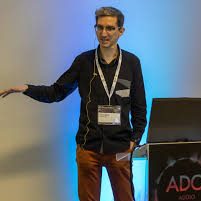Analog Filters for Realtime Audio
What makes different analog filters tick? Why does one circuit topology growl and another scream when driven? Is distortion an inherent part of each design, and if so, how can audio programmers incorporate it into their DSP? In this talk, we will demystify analog filters, providing audio developers with a foundational understanding of their behavior, implementation, and potential for creative sound design.
We begin with an introduction to the basic building blocks of filter circuits. These include Passive Components, Operational Amplifiers, and Integrators. Then, we combine them into a full circuit that implements a musical filter.
Next, we show you how to prototype these circuits using interactive simulations. This encourages experimentation, while allowing those without a background in electrical engineering to participate in crafting unique sonic processors.
However, simulations can only go so far when it comes to understanding a circuit. Thus, we will demonstrate how to build the filter you designed in reality. You will be able to measure it, verify that it works and fix any problems that appear along the way.
The next part will focus on more advanced topics, such as Feedback Paths, incorporating Distortion elements (e.g. Transistors) and adding Voltage Control to your filters.
Finally, there will be a realtime audio plugin demo featuring different analog models of classic filter circuits.

George Gkountouras
Founder
Arthurian Audio
George Gkountouras (MSc ECE) is a software engineer, researcher and entrepreneur in the audio software industry. He believes that AI will enable the creation of state-of-the-art music technology products. He has previously given talks at ADC. During his academic career, George regularly taught DSP to undergraduate students. He's worked on compilers, circuit simulators and audio plug-ins. He is also interested in Android audio applications, embedded systems (MCUs, FPGAs, FPAAs), GPU processing, discrete analog circuits, automatic differentiation and julialang.